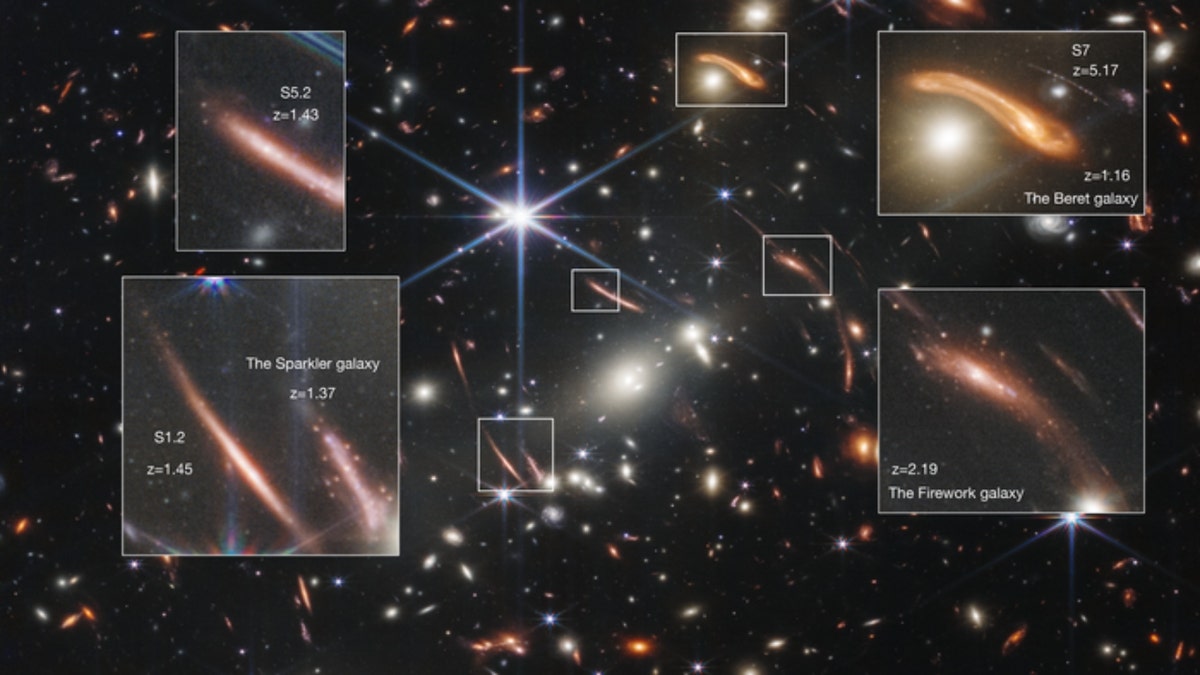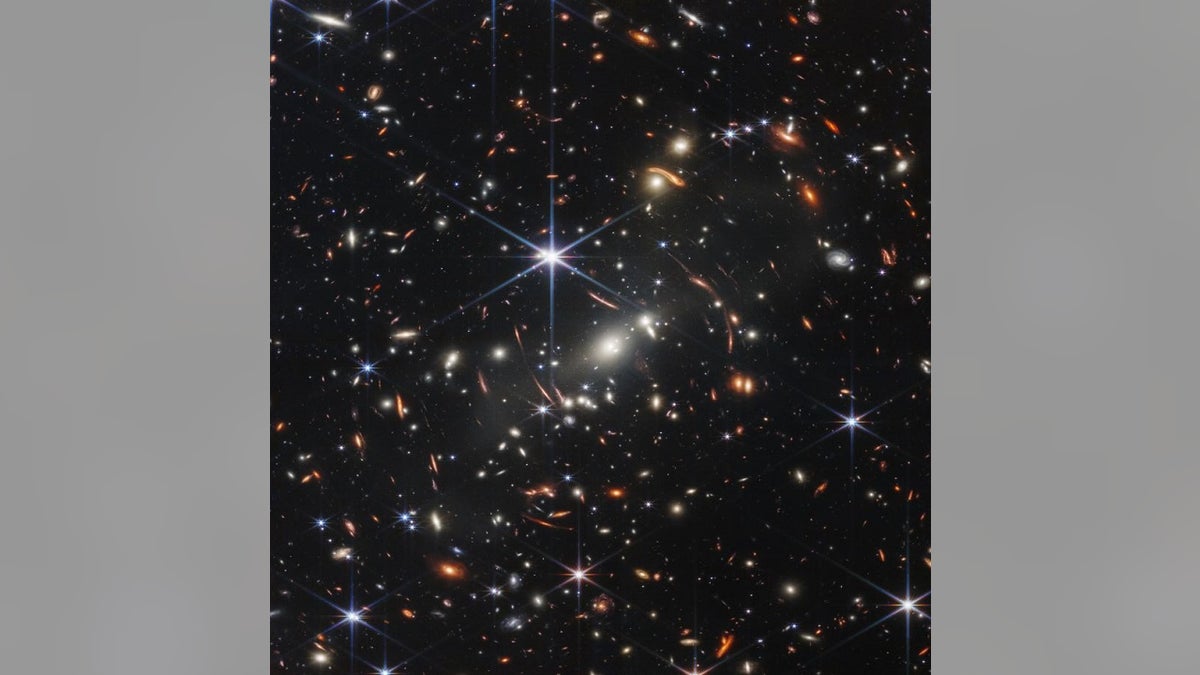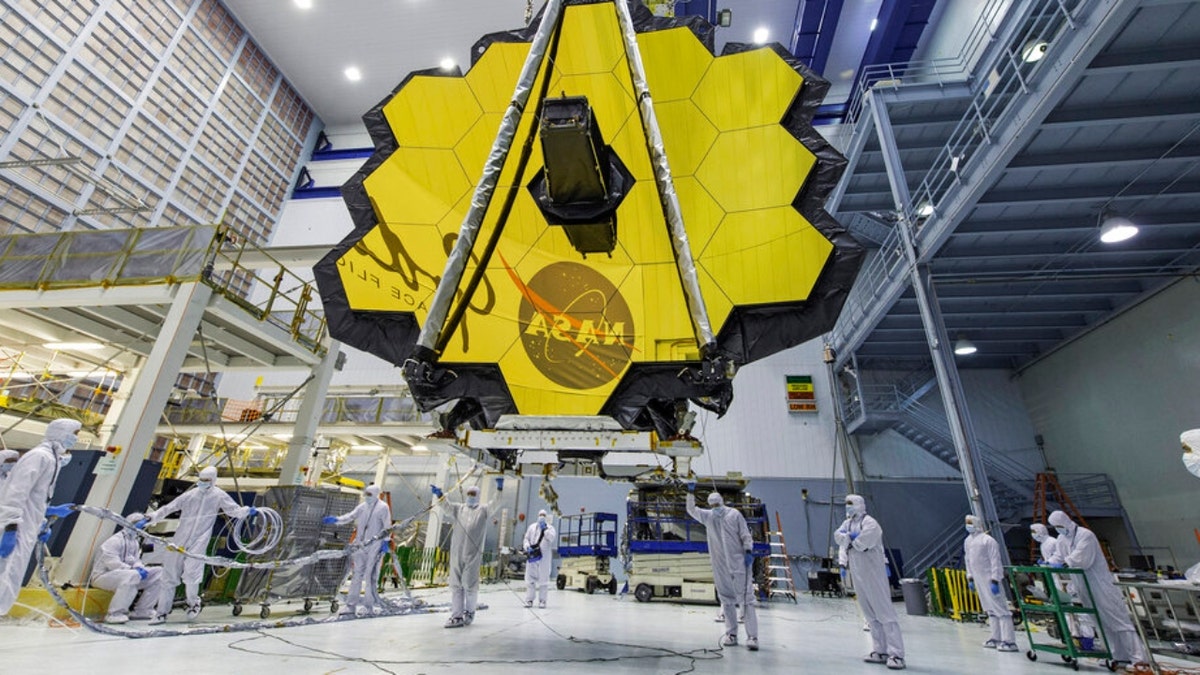Webb Space Telescope allows us to 'look into the past': Theoretical physicist
Theoretical physicist Dr. Michio Kaku explains the significance of new images provided by NASA's Webb Space Telescope on 'Sunday Night in America.'
Images from the James Webb Space Telescope have helped researchers examine compact structures of star clusters inside galaxies for the first time.
In a paper published in the journal Monthly Notices of the Royal Astronomical Society last month, the Stockholm University scientists studied the first phase of star formation in distant galaxies.
The galaxy clusters they examined were so massive that they bent light rays passing through their center, producing a magnifying glass effect. That means the images of the background galaxies were magnified. That and the resolution of the observatory helped to detect stellar clumps: compact galaxy structures.
Looking at the galaxy cluster SMACS 0723, also known as Webb’s First Deep Field, the astronomers saw even more distant galaxies in its background.
WEBB SPACE TELESCOPE 'UNEXPECTEDLY' FINDS ITS SMALLEST ASTEROID YET

The James Webb Space Telescope captured this image of a galaxy cluster (SMACS 0723). The five zoomed in galaxies are so far away that we observe them as they were when the universe was between one and five billion years old. Today the universe is 13.7 billion years old. (Image adapted from image release by NASA, ESA, CSA, STScI)
The observations aided in the study of the link between clump formation and evolution and galaxy growth just a few million years following the Big Bang.
NEIL DEGRASSE TYSON SAYS JAMES WEBB SPACE TELESCOPE IS WINDOW TO UNIVERSE 'NEVER BEFORE ACHIEVED'

This image from the James Webb Space Telescope shows galaxies around each other with light that has been bent, NASA officials said. (NASA)
"The images from the James Webb Space Telescope show that we can now detect very small structures inside very distant galaxies and that we can see these clumps in many of these galaxies. The telescope is a game-changer for the entire field of research and helps us understand how galaxies form and evolve," Angela Adamo, one of the lead authors from Stockholm University, said in a release.

Technicians lift the mirror of the James Webb Space Telescope using a crane at the Goddard Space Flight Center in Greenbelt, Maryland, on April 13, 2017. (Laura Betz/NASA via AP, File)
CLICK HERE TO GET THE FOX NEWS APP
The oldest galaxy studied in the paper is so far away that we see what it looked like 13 billion years ago. That's when the universe was only 680 million years old.






















